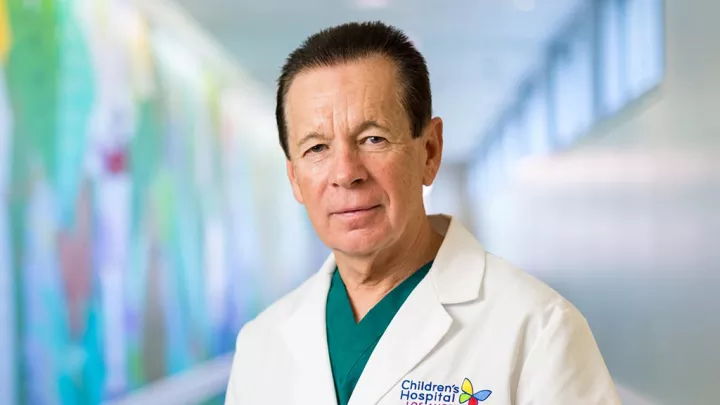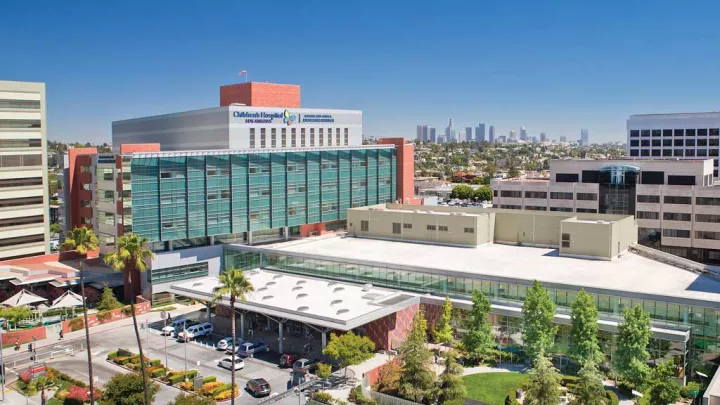
Individualizing Care in Sudden Cardiac Arrest

Sudden cardiac arrest—a sudden stopping of the heart due to an electrical disturbance—is a very rare and frightening event in children. And half the time, an underlying cause can’t be identified.
“Many of these children are seemingly the picture of good health beforehand,” says Allison Hill, MD, Co-Director of the Cardiogenomics Program at Children’s Hospital Los Angeles. “If a healthy teenager all of a sudden has a cardiac arrest, and no one can pinpoint a reason for why it happened, it’s devastating for the family.”
Dr. Hill and Paul Kantor, MBBCh, MSc, FRCPC, Chief of Cardiology and Co-Director of the Heart Institute at Children’s Hospital Los Angeles, are trying to better understand why these events occur in some young people—and how to best tailor treatment plans to each individual patient. That’s important because many children actually survive a sudden cardiac arrest, but they are then at higher risk for a future event.
Last year, Dr. Hill co-authored an editorial in the journal Heart Rhythm that discussed the need to develop better ways to find the underlying cause for in more of these pediatric cases.
In addition, Dr. Kantor recently participated in a national, multicenter effort to draft new guidelines for diagnosing and managing hypertrophic cardiomyopathy (HCM)—a genetic condition that causes heart muscle to grow abnormally thick. HCM is the most common cause of sudden cardiac arrest in youth and young adults.
The new guidelines—a report from the American College of Cardiology and American Heart Association—were published in December in the Journal of the American College of Cardiology.

Shared decision-making model
The guidelines are the first to specifically address children with HCM. One of the key tenets: the need for a patient-centered approach to care.
“In the past, these children were effectively ruled out from almost all athletic endeavors, except for activities that require very little exertion,” says Dr. Kantor. “Now, the approach has swung back to being more aware of a child’s psychological needs and of the true risks of sporting participation for an individual patient.”
He notes that the guidelines specifically state that, in recent studies, “healthy recreational exercise (moderate intensity)” has not been associated with increased risk of ventricular arrhythmia events in HCM.
Other key points include:
- A “shared decision-making model” among physicians, children and families is important for making treatment decisions and setting lifestyle restrictions.
- Children under the age of 10 who have HCM are at higher risk of sudden cardiac arrest than older children with the condition.
- The criteria for prescribing an implantable cardioverter defibrillator in children with HCM are different than in adults with the condition.
- Children with HCM should be seen at multidisciplinary centers that specialize in pediatric cardiac care.
That specialty care is also important for undiagnosed children who show symptoms of heart rhythm abnormalities—such as fainting (especially during exertion), chest pain or irregular heart rhythms.
“The worry is that the warning signs can be dismissed or not investigated, or passed off as fainting due to dehydration,” Dr. Kantor says. “These children need care from a multidisciplinary specialty pediatric heart center that can do a very thorough assessment.”
The role of genetic testing
HCM is not the only cause of sudden cardiac arrest in children, though. There are a variety of both heart and lung conditions that can trigger such an event.
But the biggest challenge comes when no cause can be found at all.
“There is a subset of patients who have a cardiac arrest in their childhood, and we never do find a cause,” says Dr. Hill. “Ultimately we need to recognize that there may be common patterns within this group of patients. We need to continue to investigate their risk of recurrent events and screen them for underlying causes.”
One increasingly important avenue is genetic testing. The Center for Cardiogenomics at Children’s Hospital Los Angeles, for example, provides genetic testing for children with suspected inherited cardiac conditions, including cardiomyopathies, arrhythmic syndromes and vascular disorders.
“There are several hundred genes that we now know are associated with cardiac disease, including diseases that cause cardiac arrest,” Dr. Hill says. “Genetic testing should be readily available for any patient who has experienced a sudden cardiac arrest, and for their immediate family members.”
Analyzing risk
Dr. Kantor is also participating in an international, multicenter effort to better predict the risk of a recurrent cardiac arrest in children who have already had such an event. The group’s validated, integrated risk model for children with HCM was published last year in Circulation.
The model is another step in better predicting—and preventing—these events in children.
“It’s a very small minority of children who will experience an event like this,” he stresses. “But in those who do, it’s important to treat each child individually to ensure a better quality of life and the best possible outcome.”


